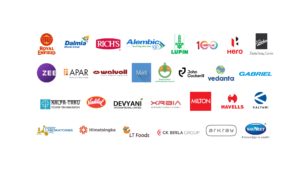SAP Transportation Management and SAP GTS Integration
SAP TM and SAP GTS Integration : In today’s interconnected global marketplace, efficient logistics management is essential for any organization aiming to stay competitive. SAP Transportation Management (SAP TM) and Global Trade Services (SAP GTS) are two powerful tools within the SAP ecosystem that can help businesses achieve a seamless and compliant supply chain. In this blog post, we’ll explore the integration of SAP TM and SAP GTS and how it can enhance your logistics and compliance processes.
Understanding SAP Global Trade Services (SAP GTS)
SAP GTS is a solution tailored for global trade compliance and customs management. It helps businesses ensure that their international trade operations comply with local and global regulations. Key features of SAP GTS include:
- Trade Compliance: SAP GTS checks trade transactions against global trade laws and regulations to ensure compliance and avoid penalties.
- Customs Management: It simplifies customs documentation and automates customs processes, reducing the risk of delays and errors.
- Embargo and Sanction Screening: SAP GTS screens business partners and transactions against government-sanctioned lists to prevent unauthorized trade.
- Export and Import Management: The solution streamlines import and export processes, including license management, duty calculation, and documentation generation.
The Integration of SAP TM and SAP GTS
The integration of SAP TM and SAP GTS brings together the strengths of both solutions, resulting in a seamless and efficient supply chain. Here are some of the key benefits:
- Enhanced Compliance: Integration ensures that transportation activities are aligned with global trade regulations, reducing compliance risks.
- Real-Time Information Sharing: Real-time data exchange between SAP TM and SAP GTS enables accurate information sharing, improving decision-making.
- Automated Documentation: Customs documentation becomes more efficient and less error-prone due to streamlined data flow.
- Optimized Transportation: Businesses can make better transportation decisions by considering trade compliance factors, leading to cost-effective logistics operations.
- Reduced Delays: Improved compliance and documentation accuracy result in fewer customs delays and smoother cross-border movements.
- End-to-End Visibility: A unified platform provides end-to-end supply chain visibility, enabling proactive issue resolution and process optimization.
Best Practices for Integration
To make the most of the SAP TM and SAP GTS integration, consider the following best practices:
- Thorough Planning: Begin with a comprehensive analysis of your supply chain processes and compliance requirements to tailor the integration accordingly.
- Data Mapping: Ensure that data from SAP TM is seamlessly integrated with SAP GTS by mapping data structures and formats effectively.
- Change Management: Prepare your team for the integration by providing adequate training and resources to adapt to the new system.
- Customization: Tailor the integration to your specific business needs, as each organization may have unique requirements.
Integrating SAP Transportation Management and SAP Global Trade Services is a strategic move for any business aiming to excel in the complex world of supply chain management and global trade compliance. By combining the strengths of these two SAP solutions, organizations can achieve operational excellence, reduce risks, and stay competitive in the global marketplace. However, successful integration requires careful planning, effective change management, and customization to suit your business needs. With the right approach, your organization can unlock the full potential of an integrated SAP TM and SAP GTS system, transforming your supply chain into a powerful competitive advantage. Read More


 RECOGNISED WORLD OVER SOLUTIONS
RECOGNISED WORLD OVER SOLUTIONS
 Find out how BSC GLOBAL digitally transformed P2P cycle for worlds renowned brand in Automobile
Find out how BSC GLOBAL digitally transformed P2P cycle for worlds renowned brand in Automobile








